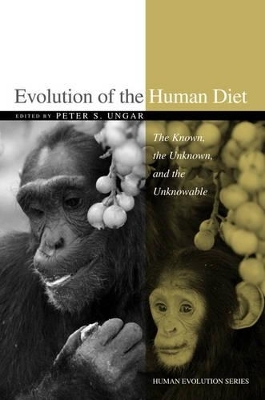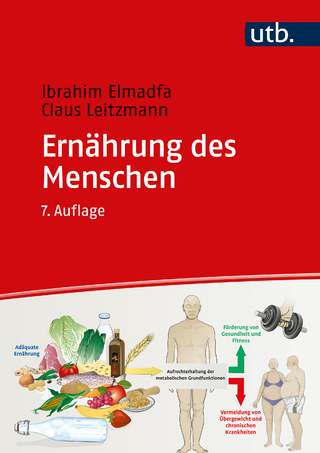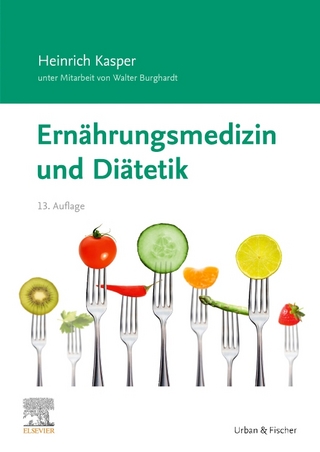
Evolution of the Human Diet
The Known, the Unknown, and the Unknowable
Seiten
2006
Oxford University Press Inc (Verlag)
978-0-19-518347-4 (ISBN)
Oxford University Press Inc (Verlag)
978-0-19-518347-4 (ISBN)
We are interested in the evolution of hominin diets for several reasons. Diet is key to understanding the ecology and evolution of our distant ancestors and their kin, the early hominins. This volume, with four main sections, brings together authorities from disparate fields to offer insights into the diets of our ancestors.
We are interested in the evolution of hominin diets for several reasons. One is the fundamental concern over our present-day eating habits and the consequences of our societal choices, such as obesity prevalent in some cultures and starvation in others. Another is that humans have learned to feed themselves in extremely varied environments, and these adaptations, which are fundamentally different from those of our closest biological relatives, have to have had historical roots of varying depth. The third, and the reason why most paleoanthropologists are interested in this question, is that a species' trophic level and feeding adaptations can have a strong effect on body size, locomotion, "life history strategies", geographic range, habitat choice, and social behavior.
Diet is key to understanding the ecology and evolution of our distant ancestors and their kin, the early hominins. A study of the range of foods eaten by our progenitors underscores just how unhealthy many of our diets are today. This volume brings together authorities from disparate fields to offer new insights into the diets of our ancestors. Paleontologists, archaeologists, primatologists, nutritionists and other researchers all contribute pieces to the puzzle.
This volume has at its core four main sections:
· Reconstructed diets based on hominin fossils--tooth size, shape, structure, wear, and chemistry, mandibular biomechanics
· Archaeological evidence of subsistence--stone tools and modified bones
· Models of early hominin diets based on the diets of living primates--both human and non-human, paleoecology, and energetics
· Nutritional analyses and their implications for evolutionary medicine
New techniques for gleaning information from fossil teeth, bones, and stone tools, new theories stemming from studies of paleoecology, and new models coming from analogy with modern humans and other primates all contribute to our understanding. When these approaches are brought together, they offer an impressive glimpse into the lives of our distant ancestors. The contributions in this volume explore the frontiers of our knowledge in each of these disciplines as they address the knowns, the unknowns, and the unknowables of the evolution of hominin diets.
We are interested in the evolution of hominin diets for several reasons. One is the fundamental concern over our present-day eating habits and the consequences of our societal choices, such as obesity prevalent in some cultures and starvation in others. Another is that humans have learned to feed themselves in extremely varied environments, and these adaptations, which are fundamentally different from those of our closest biological relatives, have to have had historical roots of varying depth. The third, and the reason why most paleoanthropologists are interested in this question, is that a species' trophic level and feeding adaptations can have a strong effect on body size, locomotion, "life history strategies", geographic range, habitat choice, and social behavior.
Diet is key to understanding the ecology and evolution of our distant ancestors and their kin, the early hominins. A study of the range of foods eaten by our progenitors underscores just how unhealthy many of our diets are today. This volume brings together authorities from disparate fields to offer new insights into the diets of our ancestors. Paleontologists, archaeologists, primatologists, nutritionists and other researchers all contribute pieces to the puzzle.
This volume has at its core four main sections:
· Reconstructed diets based on hominin fossils--tooth size, shape, structure, wear, and chemistry, mandibular biomechanics
· Archaeological evidence of subsistence--stone tools and modified bones
· Models of early hominin diets based on the diets of living primates--both human and non-human, paleoecology, and energetics
· Nutritional analyses and their implications for evolutionary medicine
New techniques for gleaning information from fossil teeth, bones, and stone tools, new theories stemming from studies of paleoecology, and new models coming from analogy with modern humans and other primates all contribute to our understanding. When these approaches are brought together, they offer an impressive glimpse into the lives of our distant ancestors. The contributions in this volume explore the frontiers of our knowledge in each of these disciplines as they address the knowns, the unknowns, and the unknowables of the evolution of hominin diets.
Peter S. Ungar is Professor of Anthropology at the University of Arkansas.
| Erscheint lt. Verlag | 26.10.2006 |
|---|---|
| Reihe/Serie | Human Evolution Series |
| Zusatzinfo | 22 halftones, 45 line illustrations |
| Verlagsort | New York |
| Sprache | englisch |
| Maße | 234 x 152 mm |
| Gewicht | 612 g |
| Themenwelt | Medizin / Pharmazie ► Gesundheitsfachberufe ► Diätassistenz / Ernährungsberatung |
| Naturwissenschaften ► Biologie ► Evolution | |
| Naturwissenschaften ► Biologie ► Humanbiologie | |
| ISBN-10 | 0-19-518347-9 / 0195183479 |
| ISBN-13 | 978-0-19-518347-4 / 9780195183474 |
| Zustand | Neuware |
| Informationen gemäß Produktsicherheitsverordnung (GPSR) | |
| Haben Sie eine Frage zum Produkt? |
Mehr entdecken
aus dem Bereich
aus dem Bereich
Indikation, Diagnostik, Therapie
Buch (2024)
Thieme (Verlag)
80,00 €
Unter Mitarbeit von Walter Burghardt
Buch | Softcover (2020)
Urban & Fischer in Elsevier (Verlag)
56,00 €


